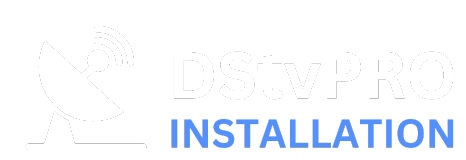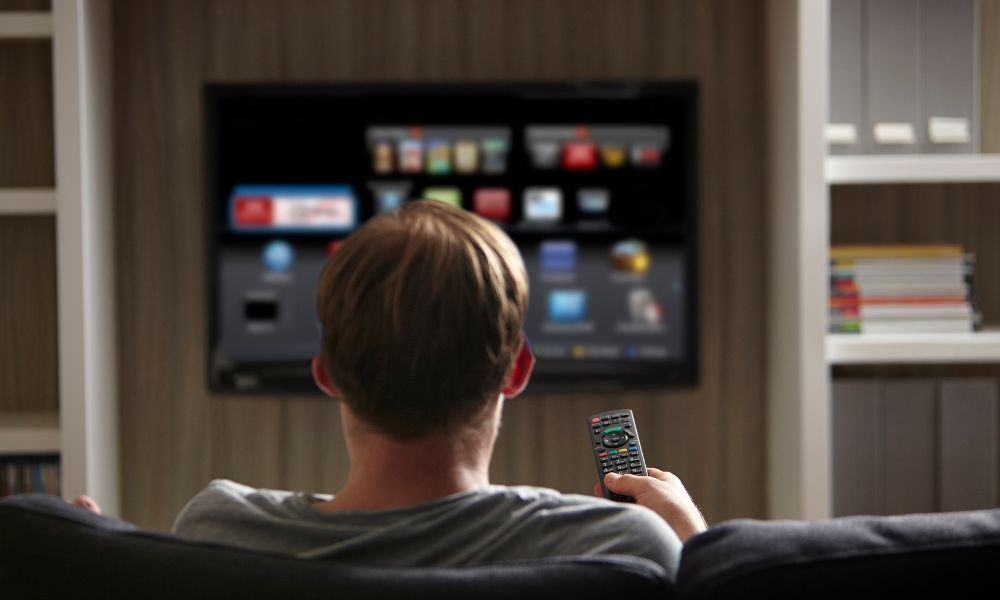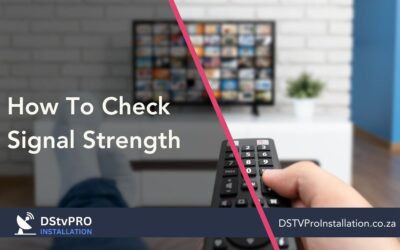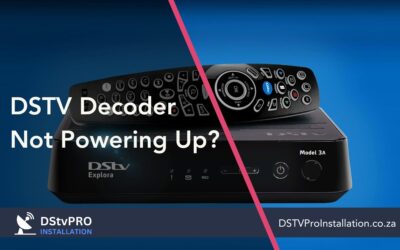Connecting your DStv decoder to your TV is a straightforward process that can be completed in a few easy steps. Whether setting up your decoder for the first time or troubleshooting a connection issue, this guide will provide clear and concise instructions to get you up and running in no time. Follow these steps to connect your DStv decoder to your TV and begin enjoying your favorite shows and movies.
Step 1: Gather the Necessary Equipment and Cables
1.1 Equipment
Before you can connect your DStv decoder to your TV, make sure you have the following equipment:
- DStv decoder
- TV
- HDMI or AV cable (depending on the available ports on your TV and decoder)
- Power cables for both the TV and decoder
- Remote control for the decoder
1.2 Cables
Depending on the type of connection you want to use, you may need one of the following cables:
- HDMI cable: This is the most common and recommended cable for connecting your DStv decoder to your TV. It provides high-definition video and audio signals.
- AV cable: If your TV or decoder doesn’t have HDMI ports, you can use an AV cable. This cable has red, white, and yellow connectors corresponding to the audio and video signals.
Make sure you have the appropriate cable for your connection type.
Step 2: Locate the HDMI or AV Ports on Your TV and Decoder
Before connecting your DStv decoder to your TV, you must locate both devices’ HDMI or AV ports. You will plug these ports into the cables to establish the connection.
Locating the HDMI Port on Your TV
If your TV has an HDMI port, it is usually on the back or side of the TV. Look for a small rectangular port labeled “HDMI.” It may be marked with a number, such as HDMI 1 or 2, indicating the input source.
Locating the HDMI Port on Your DStv Decoder
The HDMI port on your DStv decoder is typically located on the back or side of the device. It may be labeled “HDMI” or have a similar symbol. If you are using an older decoder model that does not have an HDMI port, you will need to locate the AV ports.
Locating the AV Ports on Your TV and Decoder
If your TV and DStv decoder do not have HDMI ports, you must connect with AV cables. The AV ports on your TV are usually color-coded as red, white, and yellow. Look for these ports on the back or side of the TV. The AV ports on your DStv decoder should also be color-coded to match the cables.
Once you have located the HDMI or AV ports on both your TV and DStv decoder, you can proceed to the next step of connecting the cables.
Step 3: Connect the HDMI or AV Cable to Your TV and Decoder
Connecting with HDMI Cable
To connect your DStv decoder to your TV using an HDMI cable, follow these steps:
- Locate the HDMI port on your TV and the HDMI port on your decoder.
- Insert one end of the HDMI cable into the HDMI port on your decoder.
- Insert the other end of the HDMI cable into the HDMI port on your TV.
Your HDMI connection is now complete.
Connecting with AV Cable
If you do not have an HDMI port on your TV, you can use an AV cable to connect your DStv decoder. Follow these steps:
- Locate the AV ports on your TV and the AV ports on your decoder.
- Identify the color-coded plugs on the AV cable: yellow for video, white for left audio, and red for right audio.
- Insert the yellow plug into the yellow AV port on your TV and decoder.
- Insert the white plug into the white AV port on your TV and decoder.
- Insert the red plug into the red AV port on your TV and decoder.
Your AV connection is now complete.
Step 5: Select the Correct Input Source on Your TV
Once you have connected your DStv decoder to your TV, you need to select the correct input source on your TV to view the DStv content. Here’s how:
1. Turn on your TV
Ensure that your TV is powered on and ready for use.
2. Access the input/source menu
Using your TV remote, locate the input/source button or menu. This button is usually labeled “Input,” “Source,” or “AV.” Press the button to open the input/source menu.
3. Select the correct input source
In the input/source menu, you will see a list of available input sources. Look for the input source that corresponds to the HDMI or AV port you connected your DStv decoder too. Use the arrow buttons on your remote to navigate through the options. Once you have highlighted the correct input source, press the “OK” or “Enter” button to select it.
4. Confirm the selection
After selecting the input source, your TV screen should display the DStv content from your decoder. If you don’t see the content, double-check that you have chosen the correct input source and that your DStv decoder is powered on.
By following these steps, you can select the correct input source on your TV and enjoy your DStv viewing experience.
Step 5: Select the Correct Input Source on Your TV
After connecting your DStv decoder to your TV, the next step is to select the correct input source on your TV. This will ensure that the signal from the decoder is displayed on your TV screen.
1. Check the Input Options
First, check the input options on your TV. These are usually labeled as HDMI, AV, or Component. Depending on the type of cable you used to connect your decoder to your TV, you will need to select the corresponding input source.
2. Use the TV Remote
Using the TV remote, locate the input/source button. Press this button to cycle through the different input options available on your TV.
3. Select the Correct Input Source
Once you have located the input/source button, select the input source that matches the type of cable you used to connect your decoder. For example, if you used an HDMI cable, select the HDMI input source.
4. Confirm the Connection
Once you have selected the correct input source, check your TV screen to ensure that the DStv decoder signal is being displayed. If the connection is successful, you should see the DStv menu or a live TV channel on your screen.
By following these steps and selecting the correct input source on your TV, you will be able to enjoy your DStv viewing experience without any issues.
Step 6: Set Up Your DStv Decoder
Connecting the Decoder to Power
Important: Before the setup, ensure your TV and DStv decoder are powered off.
1. Locate the power adapter that came with your DStv decoder.
2. Plug one end of the power adapter into the “DC IN” port on the back of the decoder.
3. Plug the other end of the power adapter into a power outlet.
4. Turn on the power outlet.
Note: Some DStv decoders have a built-in power supply and do not require a separate power adapter. In this case, plug the power cord directly into a power outlet.
Turning on the TV and Decoder
1. Use the TV remote to turn on your TV.
Note: Ensure the TV is set to the correct input source you connected the decoder to (HDMI or AV).
2. Use the DStv remote to turn on the decoder.
Activating Your DStv Subscription
1. Once the decoder has powered on, you will see a welcome screen or a prompt to activate your subscription.
Note: If you haven’t activated your DStv subscription yet, follow the on-screen instructions or contact your service provider for assistance.
2. Enter the necessary activation information using the DStv remote, such as your smartcard number or account details.
3. Follow any additional prompts to complete the activation process.
Note: Activation procedures may vary depending on your service provider. Refer to their instructions for specific details.
Troubleshooting Common Connection Issues
1. No Signal on the TV
If you’re experiencing a “No Signal” message on your TV after connecting your DStv decoder, there are a few steps you can take to troubleshoot the issue:
Check the cables: Ensure all cables are securely connected to the TV and the decoder. Ensure the HDMI or AV cable is inserted correctly into the corresponding ports.
Restart the decoder: Sometimes, a simple restart can resolve the issue. Turn off the decoder and unplug it from the power source. Please wait a few seconds, then plug it back in and power it on.
Check the input source: Ensure your TV is set to the correct one. Use your TV remote to navigate the input or source menu and select the corresponding HDMI or AV input.
2. Poor Picture Quality
If you’re experiencing poor picture quality on your TV, try the following:
Check the cable quality: Ensure you use high-quality HDMI or AV cables. Poor-quality cables can result in degraded picture quality.
Adjust TV settings: Use your TV remote to access the settings menu and adjust the picture settings. Adjust the brightness, contrast, and sharpness settings to improve the picture quality.
Check signal strength: If you use an antenna to receive DStv signals, ensure it is properly positioned and aligned to receive a strong signal. You may need to reposition the antenna or invest in a signal booster.
Contact DStv support: If you’ve tried all the troubleshooting steps and are still experiencing poor picture quality, it may be worth contacting DStv support for further assistance.
Understanding the Different Cable Options for Connecting Your DStv Decoder to Your TV
Different cable options are available to suit your needs and preferences when it comes to connecting your DStv decoder to your TV. Understanding these cable options can help ensure a seamless and high-quality connection.
One standard cable option is the HDMI cable. HDMI stands for High Definition Multimedia Interface, and it can transmit high-definition video and audio signals. This cable is widely used and provides a clear and crisp picture quality. To connect your DStv decoder to your TV using an HDMI cable, plug one end into the HDMI port on the decoder and the other end into the HDMI port on your TV.
Another cable option is the AV cable or composite cable. This cable is typically color-coded with red, white, and yellow connectors. The red and white connectors are for audio, while the yellow connector is for video. To connect your DStv decoder to your TV using an AV cable, plug the corresponding colored connectors into the AV ports on both the decoder and the TV.
If your TV only has a VGA port, you can use a VGA to HDMI converter cable to connect your DStv decoder. This cable converts the VGA signal from your TV into an HDMI signal that the decoder can read.
Ensuring that your cables are compatible with your DStv decoder and your TV is vital. Check the specifications of your devices and consult the user manuals for guidance on the recommended cables.
By understanding the different cable options available and choosing the appropriate one for your setup, you can ensure a reliable and high-quality connection between your DStv decoder and your TV.
Conclusion: Enjoy Your DStv Viewing Experience
In conclusion, following the step-by-step instructions in this guide, you can easily connect your DStv decoder to your TV and enjoy your favorite DStv content. Troubleshooting standard connection issues and understanding the different cable options will help ensure a seamless viewing experience. Now, sit back, relax, and enjoy your DStv programming!

With over a decade of experience in satellite installation, Mthunzi is a seasoned Satellite Installation Technician at DStv Pro Installation. Recognized for his meticulous attention to detail and expert knowledge in signal troubleshooting, Mthunzi has successfully completed over 1,000 installations, earning a reputation for reliability and excellence. Certified and constantly updated on the latest technology, he’s the go-to professional you can trust for a seamless DStv experience.




